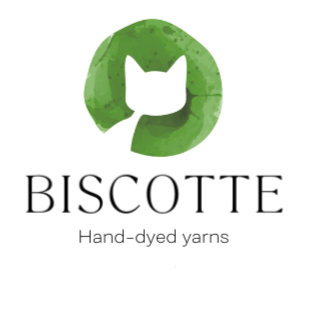Like yarn, books are hard for most knitters to resist. I find the tactile and visual qualities of printed books to be comforting and inspiring and have a large library of home decorating and gardening titles, beautiful vintage volumes and, of course, an absurd number of knitting, crochet, craft, and textile books.
In the days before Youtube and online classes, books were a primary source of needlework knowledge. If you didn’t have a mother, grandmother, aunt, uncle, or a clever friend to teach you yarny skills -- or you didn’t live in a place where crafts were part of the local culture, or a great local yarn shop -- you referred to printed matter to learn a new technique or stitch (or refresh your memory on something you needed to brush up on). According to the pioneering knitting historian Richard Rutt’s seminal History of Handknitting (1987), knitting manuals were first published in the mid-1800s and were hugely popular throughout the Victorian era. Books and magazines continued to be important sources of information, techniques, and patterns up through World War 2 – and interesting textile titles are still being published.
My personal knitting reference library includes classics like Elizbeth Zimmerman’s Knitting Without Tears (1973), Barbara Walker’s Stitch Treasuries (1968-1972), June Hemmons Hiatt’s classic The Principles of Knitting (1989, revised in 2012). Some of my most referred-to volumes for color inspo are Kaffe Fassett’s Glorious Knits (1985) and Glorious Color (1988) and Alice Starmore’s Book of Fair Isle Knitting (1988). A resurgence of knitting and craft publishing in the early 2000s was spurred by the post 9/11 knitting boom. This gave birth to the popularity of authors like Stephanie Pearl-McPhee and Clara Parkes (both known for their blend of knitting know-how and dry wit), and beautifully photographed pattern collections including Norah Gaughan’s Knitting Nature (2006), Nickie Epstein’s Knitting on the Edge series (Sixth & Spring Books), Interweave Press’s “Style” series (Color Style, Lace Style, Bag Style, etc.) and the gorgeous editions published by Stewart, Tabori & Chang under the guidance of Melanie Falick.
 Today we can Google how to do a cable cast on, search for patterns on Ravelry and scroll Instagram and Pinterest for inspiration, but despite that, a lot of us (raises hand) continue to add to our knitting libraries. Still a sucker for a nice pattern compilation – recent purchases include Laine’s 52 Weeks of Shawls and Aimee Gille’s Neon and Neutrals, also published by Laine - I’ve noticed a trend away from purely pattern books in recent years. From Barbara Levine’s 2016 fascinating photography edition People Knitting (full of vintage photos of men and women – including the abolitionist Sojourner Truth - knitting) to Rachael Herron’s memoir A Life in Stitches (chronicling how knitting helped her “stitch” her life back together), the knitting genre has evolved to include books about the business of yarn: Shelly Brander’s 2021 Move the Needle – Yarns from an Unlikely Entrepreneur; craftivism: Dee Ann Eisner’s A Call to Needles (2022); diversity in the craft world: This Long Thread by Jen Hewett; spirituality: The Mindfulness of Knitting by Rachael Matthews (2020), and self-care: Brandi Cheyenne Harper’s Knitting for Radical Self-Care (2022).
Today we can Google how to do a cable cast on, search for patterns on Ravelry and scroll Instagram and Pinterest for inspiration, but despite that, a lot of us (raises hand) continue to add to our knitting libraries. Still a sucker for a nice pattern compilation – recent purchases include Laine’s 52 Weeks of Shawls and Aimee Gille’s Neon and Neutrals, also published by Laine - I’ve noticed a trend away from purely pattern books in recent years. From Barbara Levine’s 2016 fascinating photography edition People Knitting (full of vintage photos of men and women – including the abolitionist Sojourner Truth - knitting) to Rachael Herron’s memoir A Life in Stitches (chronicling how knitting helped her “stitch” her life back together), the knitting genre has evolved to include books about the business of yarn: Shelly Brander’s 2021 Move the Needle – Yarns from an Unlikely Entrepreneur; craftivism: Dee Ann Eisner’s A Call to Needles (2022); diversity in the craft world: This Long Thread by Jen Hewett; spirituality: The Mindfulness of Knitting by Rachael Matthews (2020), and self-care: Brandi Cheyenne Harper’s Knitting for Radical Self-Care (2022).

Two recent publications are by successful authors – both knitters - who document how knitting helped them navigate difficult times in their lives, each one in a uniquely personal way. An Italian economist and life-long knitter, Loretta Napoleoni wrote The Power of Knitting (2020) after a major life change. One might wonder why the author of several best-selling books on global economics, terrorism and social change would choose to write a knitting memoir. Napoleoni charmingly weaves knitting history (men were the first knitters), with her own professional and knitting journey and a hopeful message about the international connections, and healing powers, the knitting community provides. She includes a handful of cute patterns that tie in with her personal knitting story.
Peggy Orenstein, the author of Boys and Sex and Girls and Sex, among other writings about sexuality in an increasingly complicated world, chose to write her knitting memoir, Unraveling, during the global Covid pandemic, when she had time on her hands to pursue her dream of chronicling the making of a garment from sheep to sweater. Like Napoleoni, Orenstein interweaves issues that are important to her - feminism, history and concerns about climate change - with her own personal story. She documents the challenges of learning how to shear a sheep, spin and dye the wool and knit what she calls “the world’s ugliest sweater”, all during a time when virtually everything was in a state of lockdown. And, like Napoleoni, her writing style is engaging, witty and informative.
Have you discovered new authors through this post? Please share this article with other knitting and book lovers!
By Karin Strom 4/30/2023


